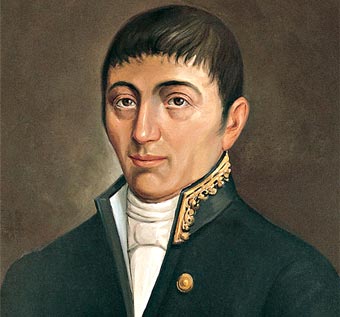José Carlos Mariátegui
He was born on June 14, 1894 in Moquegua. His parents were Maria Amalia La Chira Ballejos and the Basque Francisco Javier Mariátegui Requejo. Had several brothers, of whom only two survived: Julio César and Guillermina. Abandoned by the father they are forced to seek better fortune in Lima. In 1899, however, the family moved to Huacho.
In 1902, after an accident at school, it is interned in the Maison de Sante, of the Capital. This will mark the beginning of his illness in the left leg. He could hardly pursue primary studies. In 1909, at the age of 14, he entered to work in La Prensa newspaper, first as alcanzarrejones, and later as Assistant linotypers. Despite not having completed his school studies, Mariátegui came to form in journalism and from 1914 worked as an editor at the newspaper La Prensa, and collaborated with the magazine world Lima among others. But in Columbus and El Tiempo in 1916 where affirm your personality in this first stage of their vital route. He cultivated several literary genres. In 1918, he collaborates with the newspaper our time where criticizes the existing social structure. In 1919 he created La Razón from where it supported the University reform and working-class struggles. It criticizes the President Augusto B. Leguía and becomes the voice of the workers by founding the Federacion Obrera Regional Peruana.
He traveled Europe thanks to a scholarship that was delivered to him by the Government of Leguía as a covert form of deportation. Travel across France, Germany, Austria and Italy. In Italy he married Anna Chiappe. He was present during the occupation of the factories in Turin, as well as in the Congress of the party socialist Italian, in January 1921, occurs where the historic split and the Italian Communist Party complies. During his stay in Italy takes Marxism as a method of study. When he leaves Italy, Musolini was about to seize power. In his writings of this period, it notes that fascism is a response of the bourgeoisie to a deep social crisis, which appeals to the masses and is based on a cult violence. According to his analysis, the victory of fascism is the price that a country must pay for the contradictions of the left.
On March 17, 1923, he returned to Lima, he begins writing articles about the social situation in Europe and to study Peruvian society from an approach to Marxist. He also revisits the contact with Víctor Raúl Haya de la Torre, future leader of the APRA. In October 1923 has traveled to Mexico as exiled, leaving Mariátegui the direction of clarity magazine, whose Fifth Edition was dedicated to Lenin. During this period also became Professor of the Universidad Popular González Prada.
In 1924, due to an old injury, the leg was amputated. In September 1926, he founded the magazine Amauta (from the quechua hamaut'a, which means Sage or master), where he published some articles that would later form part of his work Summit seven trials of interpretation of reality Peruana, published in 1928. Some of his articles would be published in the newspaper El Peru directed by the controversial Nazario Chávez Aliaga Cajamarca intellectual with whom he shared many of their ideas. The magazine would be destined to become expression of an inclusive socialism, Peruvian culture and Latin America in general. Pluralistic by nature, this publication hosted the most diverse voices, regardless of political beliefs or social origin. Proof of that gives it the distinct contributions of thinkers and intellectuals as outstanding in its time as Martín Adán, José María Eguren, Luis Alberto Sánchez, among other distinguished writers.
He was put in jail in 1927 during the process against the Communists, but then they gave him house arrest.
In 1928 he breaks with the APRA leader, Víctor Raúl Haya de la Torre and founded the Peruvian Socialist Party. This party was consolidated in October of that year and Mariátegui will become its Secretary General (then his death party will change name and will be called Communist Party of the Peru). During the same period, he founded the proletarian magazine work. That year published the seven trials...'. The work is considered the first text dedicated to the analysis of Latin American society. The following year, 1929 founded the General Workers Confederation of Peru. He finally died on April 16, 1930, almost on the eve of his expected trip to settle in Buenos Aires, because of complications related to the amputation of his leg.
His political work in defence of trade unionism and the proletariat is very important, as well as his innovative political thought for the time. In fact the great Amauta (as it is also known) is considered as one of the first social scientists in the Americas and one of the most important of the 20th century.
He died at home by not being able to walk, because we lost two legs. He was buried in the cemetery priest Matías Maestro de Lima under a large rock, like fellow controversial Victor Raul Haya de la Torre.


.jpg)
.jpg)

.jpg)


.jpg)
.jpg)

.jpg)



.jpg)





















.jpg)



